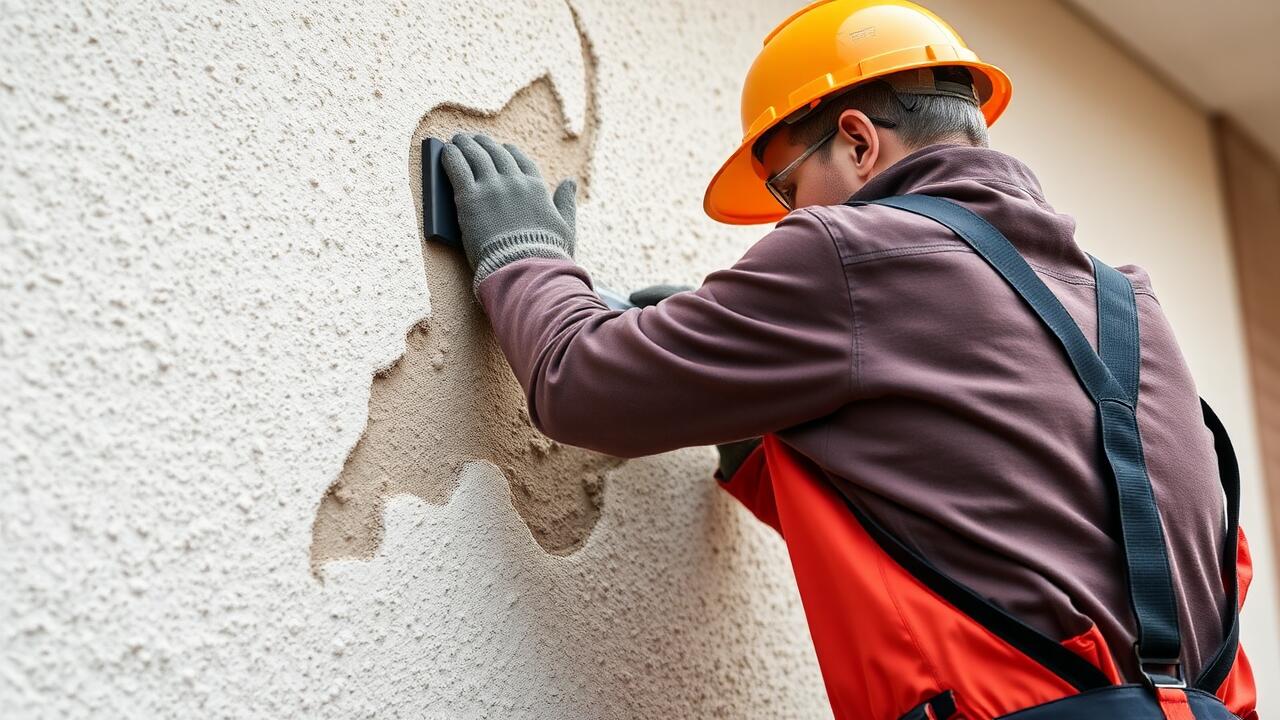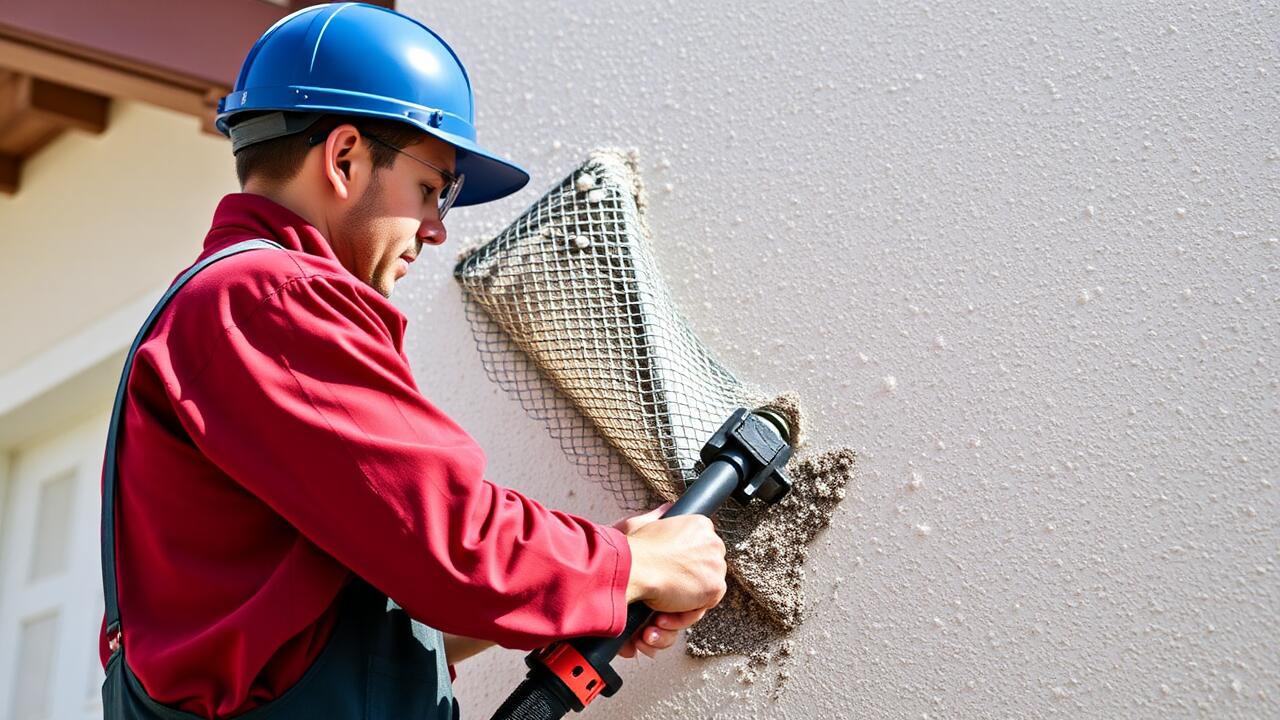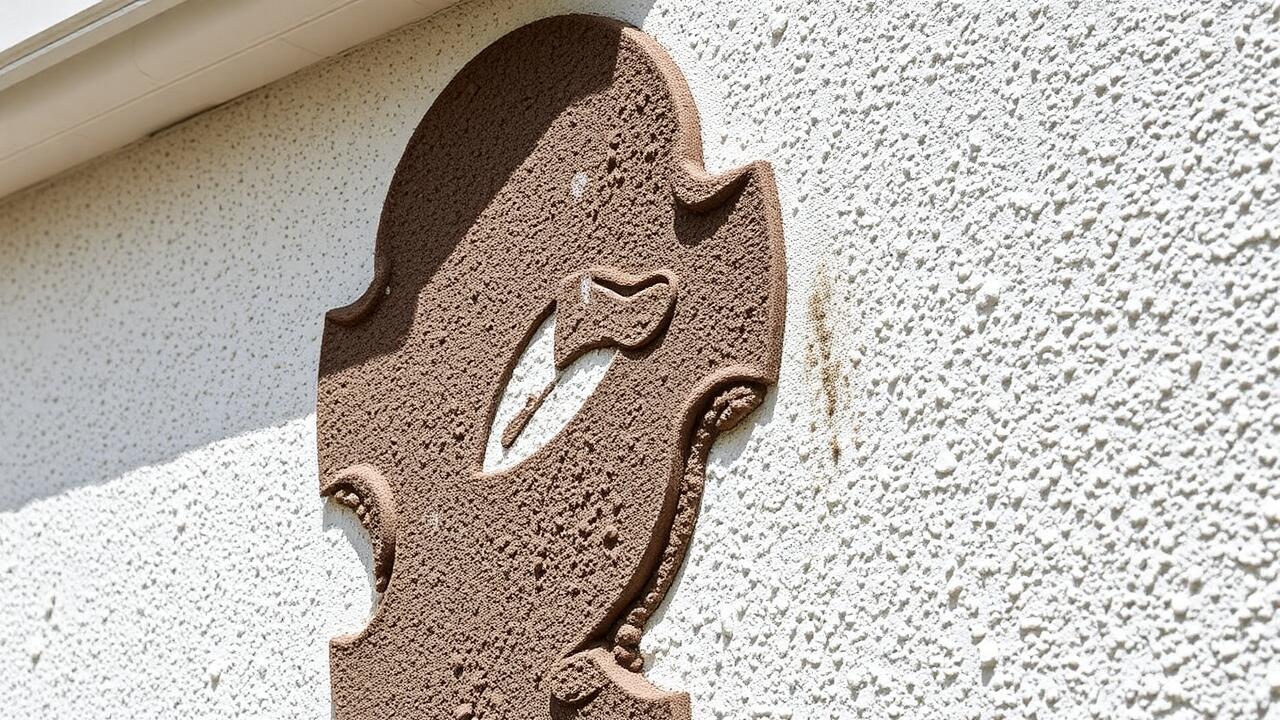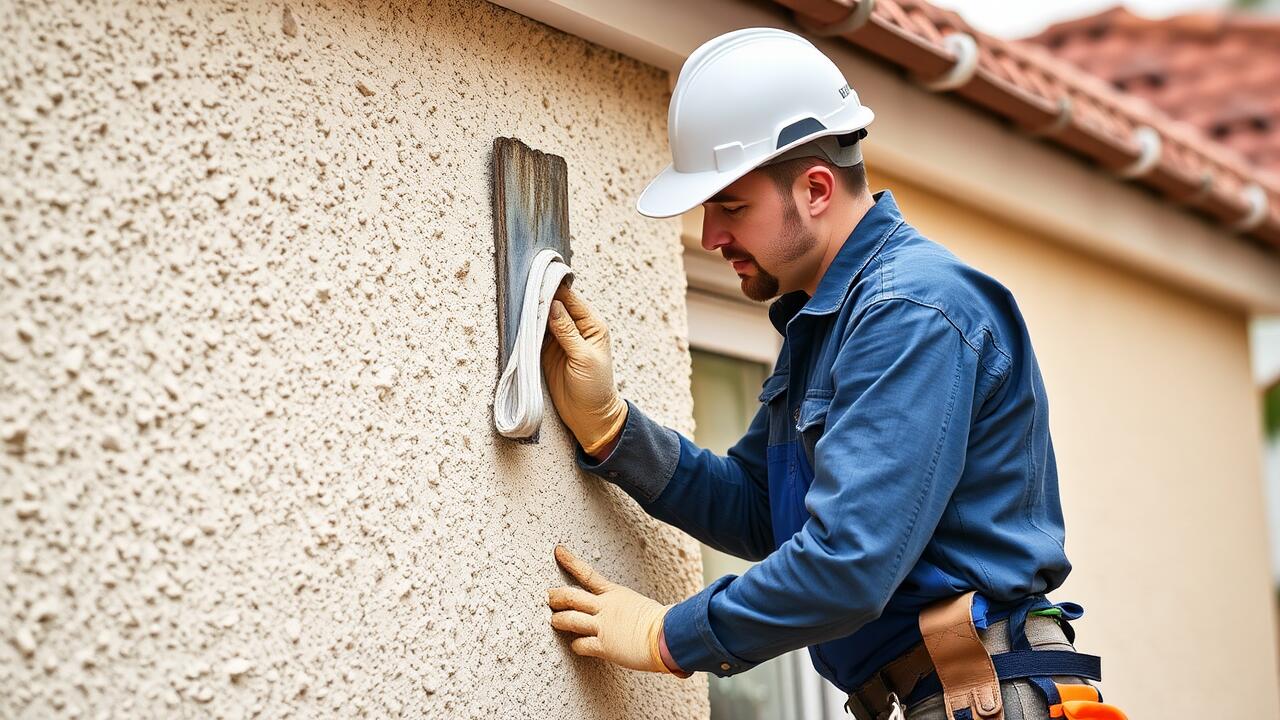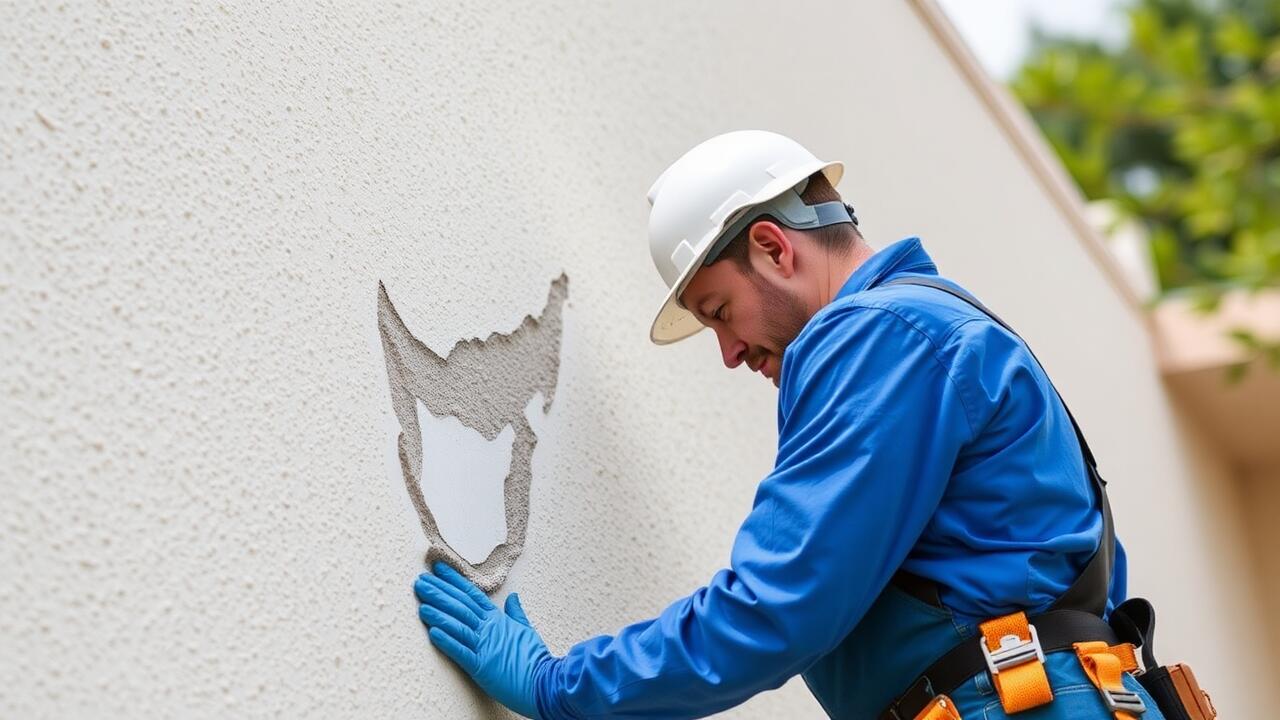
Choosing the Right Primer for Your Project
Selecting the appropriate primer for a stucco project is crucial for achieving a durable and aesthetically pleasing finish. Factors such as the specific type of stucco, the condition of the surface, and the climate in the area can significantly influence the choice of primer. For instances requiring stucco repair, searching for services like "Stucco Repair near me" can help identify local professionals who may recommend suitable primer products based on their experience and expertise.
Additionally, considering the environment is essential when choosing a primer. Some primers are formulated to withstand specific weather conditions, while others may have properties that enhance adhesion and durability. Reading product labels and understanding the unique needs of your project will lead to better outcomes. Proper planning and selection can extend the life of the stucco finish and improve overall satisfaction with the completed work.
Factors to Consider When Selecting a Stucco Primer
Choosing the right stucco primer involves evaluating several key factors, including the specific type of stucco surface you are working with. Different formulations cater to various surfaces and conditions. Take note of whether the stucco is new, repaired, or weathered, as this will influence the absorption and adhesion properties of the primer. Inquire about local recommendations or search online for options by typing “Stucco Repair near me” to ensure you find quality products suited for your project.
The climate in your area also plays a significant role in your selection process. Humidity levels, temperature fluctuations, and UV exposure can all affect primer performance. For instance, primers designed for high-moisture environments may not perform well in dry areas, leading to issues like peeling or cracking. It's beneficial to consult product specifications or seek advice from professionals to determine the best primer for your particular weather conditions.
Application Techniques for Stucco Primer
Proper application techniques are crucial for achieving a durable finish when using stucco primer. Start with a clean surface by removing dust, dirt, and any loose particles. The primer can be applied using a brush, roller, or spray gun, depending on the desired texture and ease of access. It's essential to work in manageable sections, ensuring consistent coverage. For those unfamiliar with the process, consulting a professional or searching for "Stucco Repair near me" can provide valuable assistance.
Additionally, maintaining proper weather conditions enhances the primer's bonding and performance. Avoid applying the primer in extreme temperatures or during rainy weather, as this can negatively impact curing. Allowing the primer to dry thoroughly between coats is vital for a successful application. Regularly checking for any imperfections or missed spots will ensure that the final finish is smooth and even, contributing to the longevity of the stucco surface.
Best Practices for Even Coverage
Achieving even coverage while applying stucco primer is essential for a successful finish. Utilizing the appropriate tools, such as a high-quality sprayer or roller, ensures that the primer adheres uniformly to the surface. It's advisable to work in manageable sections, allowing for a seamless application before the primer begins to dry. Always inspect the surface for imperfections or debris that could disrupt the consistency of the coverage.
When planning your project, consider seeking local assistance by searching for "Stucco Repair near me." Professionals can provide guidance on the best practices specific to your geographical area, taking into account local climate conditions. For optimum results, aim to apply the primer during ideal weather conditions, avoiding high humidity or extreme temperatures that could affect drying time and adhesion.
Environmental Considerations
When considering the application of stucco primer, environmental factors play a pivotal role in achieving optimal results. Humidity levels can influence drying times and adhesion, while extreme temperatures can affect the overall performance of the primer. Applying primer in excessive heat can lead to premature drying, which may undermine its effectiveness. Conversely, low temperatures can slow down drying times, increasing the risk of moisture entrapment beneath the primer layer. Therefore, it's crucial to monitor weather conditions closely and schedule application when environmental factors align favorably.
Additionally, choosing the right primer that can withstand local climate conditions is essential for long-lasting performance. Areas with high moisture levels may require specially formulated primers to mitigate water damage and prevent mold growth. Maintaining search queries like "Stucco Repair near me" can assist homeowners in finding professional help to ensure the right product and technique is utilized. A primer that complements the particular environmental challenges can significantly enhance the durability and appearance of the finished stucco surface.
How Weather Affects Primer Performance
Weather conditions play a significant role in the effectiveness of stucco primer application. High humidity can hinder the drying process, leading to potential adhesion issues that may compromise the quality of the finish. Conversely, extremely dry conditions may cause the primer to set too quickly, resulting in an uneven surface that can affect the overall performance of the stucco coating. It is essential to monitor the weather and plan the application accordingly to achieve the desired results.
Temperature fluctuations also impact primer performance. Cold temperatures can prolong curing times, creating an environment where the primer may not adhere properly to the surface. In contrast, hot weather can accelerate drying, increasing the risk of cracking or peeling. When searching for solutions, many homeowners opt for "Stucco Repair near me" to ensure they engage professionals who understand how to navigate these environmental factors effectively. Proper timing and conditions are crucial for ensuring the integrity of the final stucco finish.
FAQS
Why is it important to use a proper stucco primer?
Using a proper stucco primer is crucial because it helps ensure better adhesion of the stucco, prevents peeling and cracking, and enhances the overall durability and longevity of the finish.
What factors should I consider when selecting a stucco primer?
When selecting a stucco primer, consider factors such as surface type, environmental conditions, the specific stucco product being used, and the primer's compatibility with paint if you plan to finish with color.
What are the best application techniques for stucco primer?
The best application techniques for stucco primer include using a roller or sprayer for even coverage, applying in thin coats to avoid pooling, and allowing adequate drying time between coats.
How does weather affect the performance of stucco primer?
Weather can significantly affect primer performance; high humidity or rain can delay drying and curing, while extreme heat can cause the primer to dry too quickly, leading to poor adhesion.
Can I apply stucco primer on wet surfaces?
No, it is not recommended to apply stucco primer on wet surfaces. The substrate should be dry to ensure proper adhesion and avoid potential issues like peeling or blistering.
